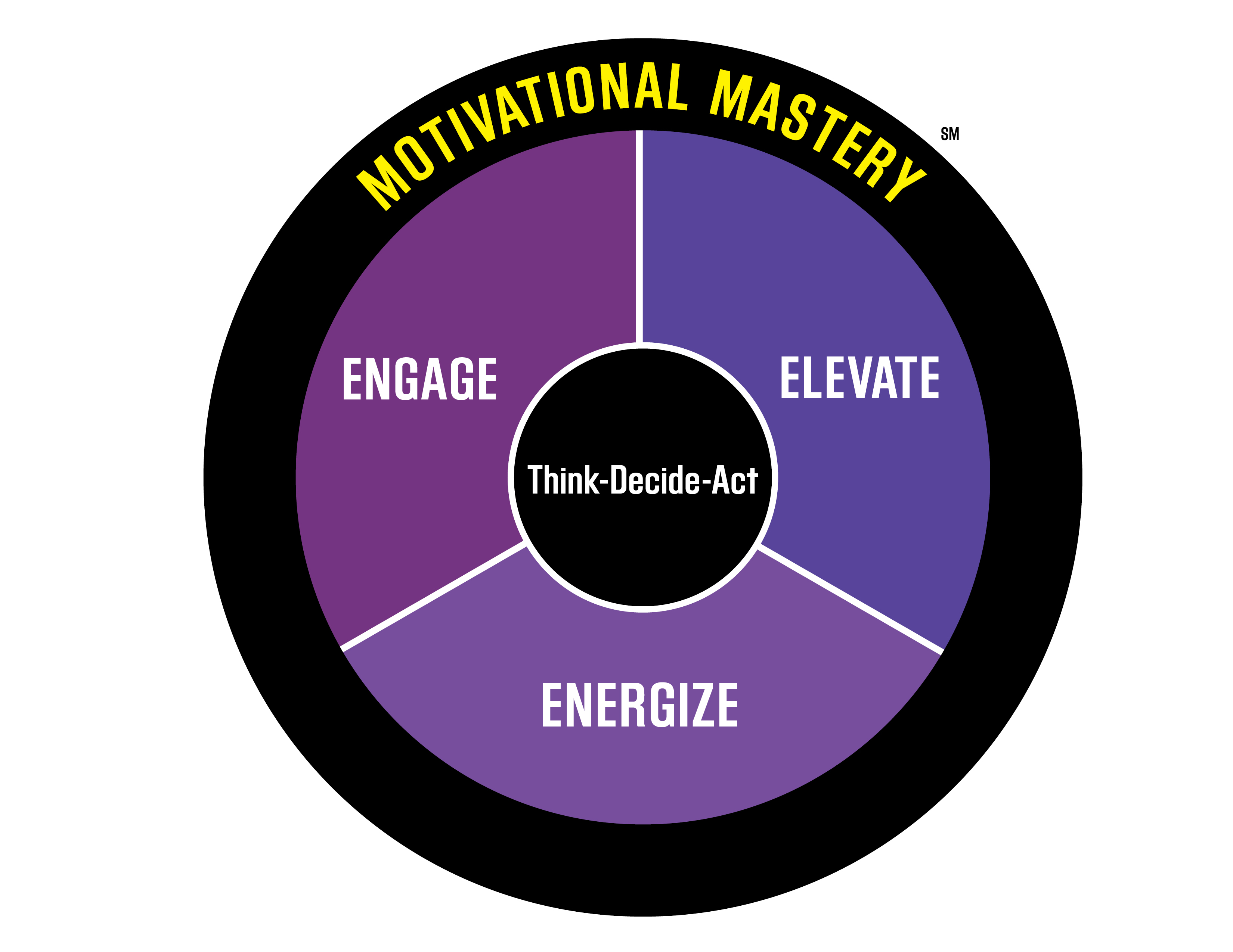
MOTIVATIONAL MASTERY: ENGAGE. ELEVATE. ENERGIZE.
People who advance to the leading edge of performance have motivational mastery. They engage, elevate, and energize others. They are driven to think, decide, and act in ways that lift and inspire people. And, they create an environment where people are motivated—to do their best work and perform with excellence. Effective leaders motivate their colleagues by supporting sustainable achievement of individual and organizational goals. By interacting with everyone in this way, leaders are better able to mentor and accelerate people’s professional development and alignment with the organization. So, where do great leaders begin when it comes to motivation?
- ENGAGE. Great leaders include and involve everybody in the story. One of my clients, Dave, oversaw warehouses throughout a large region that supplied grocery stores during a time when a fierce competitor was threatening to move into the region. To beat the competition, Dave’s company had to figure out a way to do what they were doing at 30 percent improved efficiency. Dave was masterful about communicating a larger story about how everyone in all the warehouses could band together to save the company and drive the competitor out. He prefaced every communication with the heritage and history of the company (e.g., emails, meetings, conversations, etc.). As a result, all employees knew the story and were telling it. To create a collective identity around something bigger, Dave painted a metaphorical picture of a burning platform. In other words, he made sure everybody knew that the organization had to change, or the platform around it would burn and then they would have no choice but to change. Whether something positive is pulling the enterprise or something negative is pushing it, effective leaders make the bigger picture crystal clear as they engage and unite everyone’s collective energy in the efforts to achieve the goal.
- ELEVATE. Successful leaders keep the mission in their communications. They make sure that everybody hears that what they do contributes to the organization’s mission (e.g., saving lives). My team worked with a group that handled billing and processing. The leaders did a great job of identifying the mission of each department and the performance measures that matched those missions. They tracked them over time, then educated and shared this information so everyone knew how to drive performance in a proactive, nonthreatening way. It raised the level of energy in the workforce. All employees knew how those measures reflected performance to mission and how what they did each day drove those measures up or down. People started doing more with less, and they went after the most valuable work. In the past, they had sometimes spent all day doing the wrong things. But afterward, they spent every day doing the right things, and they could see an impact on the organization. They understood the significance of their work and got regular feedback on it. Everyone is a piece of the bigger picture. That means they should be doing something that they know is important. Effective leaders help people figure out what’s important, and they measure, reward, and recognize those behaviors.
- ENERGIZE. Stellar leaders tell people that they appreciate them. In one organization every meeting was spent looking at balance sheets, financial reports, and task completion status. These meetings were all financially driven and looking at all of that data was not energizing. The CEO drilled everyone on the “whys.” For example, he asked why the revenue was lower than expenses during the first quarter. And the answer was: “Because we have to spend most of our money up front during the first quarter to reap the benefit of that investment for the rest of the year. The whole isn’t in yet.” The CEO didn’t believe it until the fourth quarter when the whole story became clear, and the organization exceeded all of its targeted goals. In stark comparison to the CEO’s controlling style was Carole’s leadership style. When it was her turn to speak at an “all hands” meeting, Carole simply said: “I want to spend my time genuinely thanking everyone here for all you have done.” You could see tears in the eyes of people who had worked there for many years and never heard “thank you.” She put the rest of the leaders to shame and became the new informal CEO because of the loyalty she gained from the people throughout the organization. When it’s all said and done, transformational leaders like Carole attract people and influence them because they understand how to energize people.
Leaders can expedite the rate at which they and their people grow more motivationally masterful by investing wisely in education, training, and development. My assertion–help every individual in your organization to build toward motivational mastery (if you’re not doing so already), and consciously recruit people who exhibit it. Then, do everything you can to help them further develop and leverage this strength. In the end, when it comes to mastering motivation, it’s important to create a culture where people know and behave as though every thought, word, and deed counts as they consciously lift and inspire others.
Where have you or how have you seen engaging, elevating, and energizing people contribute to success?


